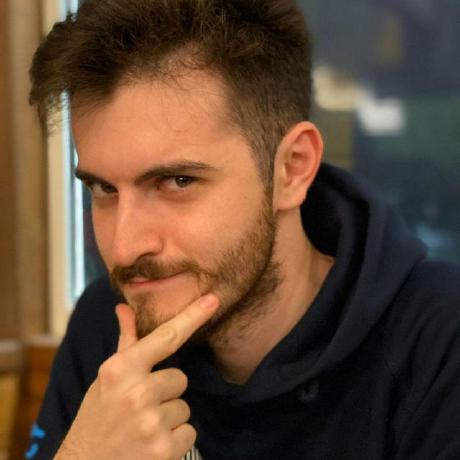Realtime Control of 5G Wireless Networks:
Taming the Complexity of Future Transmission and Computation Challenges
Motivation
The fifth generation (5G) mobile communications systems promises very high bitrates and ultra-low latencies, whilst at the same time hosting a massive amount of edge computing power. These 5G qualities are expected to spur a multitude of services such as broadband access in dense areas, augmented and virtual reality, extreme real-time and ultra-reliable communications, among others. However, an effective control of such communication and computation tasks is extremely challenging due to its real-time nature. With this project, we target the development of pioneering mathematical and algorithmic tools for the real-time control of radio access and computation resources in 5G mobile networks. To effectively tackle this, we have united an interdisciplinary team, featuring highly reputed young professionals in telecommunications, control theory and computer science. The main project outcomes are: a predictive, distributed, and asynchronous optimization framework, with stability guarantees, and an open source largescale simulator, to quantify the effectiveness of the developed solutions. A smooth and effective integration of theory, algorithms and simulation software will be ensured by a sensible secondment plan involving the hired young researchers.

Project objectives and operations
WP1 – 5G Networks
WP1 will devise mathematical models for 5G systems, which will be fed into subsequent tasks for the development of theories and algorithms. These will be then fed back and integrated into the WP1 simulator.
- T1.1: 5G modeling
- T1.2: Simulation and continuous refinement
- T1.3: Final Testing
WP2 – Learning
WP2 develops a methodological framework for real-time space-time learning and prediction of user mobility, computational and traffic profiles, considering WP1 models.
- T2.1: Distributed space-time estimation
- T2.2: Partition-based learning for distributed estimation
WP3 – Control
WP3 will develop real-time scheduling, which is required at the transmission level to optimize the balancing of resources and reducing delays.
- T3.1: Cooperative any-time scheduling
- T3.2: Partition-based Model Predictive Control
WP4 – Optimization
The learning and control theory in WP2 and WP3 require the solution of distributed optimization problems. WP4 develops the related optimization algorithms.
- T4.1: Consensus-based dynamic scheduling
- T4.2: ADMM-based optimization
- T4.3: Deadline-aware allocation of computing resources


Members

Luca Schenato

Michele Rossi

Giuseppe Piro

Luigi Palopoli

Roberto Passerone

Giovanni Perin

Nicolò Dal Fabbro

Luca Ballotta

Arcangela Rago

Sergio Martiradonna

Alessio Maritan

Matthias Pezzutto

Francesco Riz

Tadeus Prastowo

Ayub Shah

Giovanni Iacovelli

Antonio Petrosino

Giancarlo Sciddurlo

Giovanni Grieco

Ingrid Huso

Gennaro Boggia

Daniele Pugliese

Federica de Trizio

Simona Massari

Paolo Benedetti

Michele Berno
Publications
Journal articles
- L. Ballotta et al, “Computation-Communication Trade-Offs and Sensor Selection in Real-Time Estimation for Processing Networks,” IEEE TNSE, 2020
- M. Pezzutto et al, “Remote MPC for tracking over lossy networks,” IEEE CSL, 2021
- G. Perin et al, “Towards Sustainable Edge Computing Through Renewable Energy Resources and Online, Distributed and Predictive Scheduling,” IEEE TNSM, 2022
- M. Pezzutto et al, “Transmission power allocation for remote estimation with multi-packet reception capabilities,” Automatica 2022
- L. Ballotta et al, “Can Decentralized Control Outperform Centralized? The Role of Communication Latency,” IEEE Control TCNS, 2023
- L. Ballotta, V. Gupta, “Faster Consensus via a Sparser Controller,” IEEE CLS, 2023
- Y. Chang et al, “D-Lite: Navigation-Oriented Compression of 3D Scene Graphs for Multi-Robot Collaboration,” IEEE RAL, 2023
- G. Perin et al, “EASE: Energy-Aware Job Scheduling for Vehicular Edge Networks With Renewable Energy Resources,” in IEEE TGCN, 2023
- A. Maritan, L. Schenato, “ZO-JADE: Zeroth-Order Curvature-Aware Distributed Multi-Agent Convex Optimization,” IEEE CSL, 2023
- N. Dal Fabbro et al, “Federated TD learning over finite-rate erasure channels: Linear speedup under markovian sampling,” IEEE CSL 2023
- L. Ballotta et al, “To Compute or Not to Compute? Adaptive Smart Sensing in Resource-Constrained Edge Computing,” IEEE TNSE, 2024
- L. Ballotta et al, “Can Competition Outperform Collaboration? The Role of Misbehaving Agents,” IEEE TAC, 2024
- N. Dal Fabbro et. al., “SHED: A Newton-type algorithm for federated learning based on incremental Hessian eigenvector sharing,” Automatica, 2024
- L. Ballotta et al, “VREM-FL: Mobility-Aware Computation-Scheduling Co-Design for Vehicular Federated Learning,” [under review at IEEE TVT]
- F. Riz et al, “Perception-Aware Trajectory Planning for a Pair of Unicycle-Like Robots With Absolute and Relative Ranging Measurements,” IEEE CSL, 2023
- F. Riz, et al, “On Local/Global Constructibility for Mobile Robots Using Bounded Range Measurements,” IEEE CSL, 2022
- S. Martiradonna et al, “On the Evaluation of the NB-IoT Random Access Procedure in Monitoring Infrastructures,” Sensors, 2019
- S. Martiradonna et al, “5G-air-simulator: An open-source tool modeling the 5G air interface,” Networks, 2020
- S. Martiradonna et al, “Understanding the 5G-air-simulator: a Tutorial on Design Criteria, Technical Components, and Reference Use Cases,” Computer Networks, 2020
- A. Rago et al, “Multi-Task Learning at the Mobile Edge: an Effective Way to Combine Traffic Classification and Prediction,” IEEE TVT., 2020
- S. Martiradonna et al, “Deep reinforcement learning-aided RAN slicing enforcement supporting latency sensitive services in B5G networks,” Internet Technol. Lett., 2021
- A. Shah et al, “A Quantitative Cross-Comparison of Container Networking Technologies for Virtualized Service Infrastructures in Local Computing Environments,” Trans. Emerging Telecommunications Technol., 2021
- P. Benedetti et al, “A Softwarized and MEC-Enabled Protocol Architecture Supporting Consumer Mobility in Information-Centric Networks,” Computer Networks, 2021
- S. Martiradonna et al, “Cascaded WLAN-FWA Networking and Computing Architecture for Pervasive In-Home Healthcare,” IEEE WC, 2021
- A. Rago et al, “Anticipatory Allocation of Communication and Computational Resources at the Edge using Spatio-Temporal Dynamics of Mobile Users,” IEEE TNSM, 2021
- G. Sciddurlo et al, “Looking at NB-IoT Over LEO Satellite Systems: Design and Evaluation of a Service-Oriented Solution,” IEEE IOTJ, 2022
- N. Dal Fabbro et al, “Model-free radio map estimation in massive MIMO systems via semi-parametric Gaussian regression,” IEEE WCL, 2022
- A. Rago et al, “A Tenant-Driven Slicing Enforcement Scheme based on Pervasive Intelligence in the Radio Access Network,” Computer Networks, 2022
- F. Vista et al, “Hybrid quantum-classical scheduling optimization in UAV-enabled IoT networks,” Information Processing, 2023
- Petrosino et al, “On the Optimal Deployment of Virtual Network Functions in Non-Terrestrial Segments,” IEEE TNSM, 2023
- G. Iacovelli et al, “Multi-UAV IRS-assisted Communications: Multi-Node Channel Modeling and Fair Sum-Rate Optimization via Deep Reinforcement Learning,” IEEE IOTJ, 2023
- G. Grieco et al, “A System-Level Simulation Module for Multi-UAV IRS-assisted Communications,” IEEE TVT, 2024
- G. Iacovelli et al, “Fair Energy and Data Rate Maximization in UAV-Powered IoT-Satellite Integrated Networks,” IEEE TC, 2024
- G. Iacovelli et al, “A Probability-Based Optimization Approach for Entanglement Distribution and Source Position in Quantum Networks,” IEEE JSAC., 2024
- L. Papangelo et al, “Adversarial Machine Learning for Image-Based Radio Frequency Fingerprinting: Attacks and Defenses,” IEEE Commun. Mag., 2024
Conference papers
- L. Ballotta et al, “From Sensor to Processing Networks: Optimal Estimation with Computation and Communication Latency,” IFAC World Congr., 2020
- L. Ballotta et al, “Optimal Network Topology of Multi-Agent Systems subject to Computation and Communication Latency,” MED, 2021
- M. Pezzutto et al, “Constrained Control with Communication Blackouts: Theory and Experimental Validation over Wi-Fi,” MED, 2021
- V. Tripathi et al, “Computation and Communication Co-Design for Real-Time Monitoring and Control in Multi-Agent Systems,” WiOpt, 2021
- L. Ballotta et al, “Competition-Based Resilience in Distributed Quadratic Optimization,” IEEE CDC, 2022
- L. Ballotta et al, “A Reinforcement Learning Approach to Sensing Design in Resource-Constrained Wireless Networked Control Systems,” IEEE CDC, 2022
- S. Wildhagen et al, “Self-triggered MPC robust to bounded packet loss via a min-max approach,” IEEE CDC, 2022
- A. Maritan et al, “Network-GIANT: Fully Distributed Newton-Type Optimization via Harmonic Hessian Consensus,” IEEE GC Wkshps, 2023
- N. Dal Fabbro et al, “Q-SHED: Distributed Optimization at the Edge via Hessian Eigenvectors Quantization, “ IEEE ICC, 2023
- L. Ballotta, M. Yemini, “The Role of Confidence for Trust-based Resilient Consensus,” ACC, 2024
- A. Adibi et al, “Stochastic Approximation with Delayed Updates: Finite-Time Rates under Markovian Sampling,” AISTATS, 2024
- T. Prastowo et al, “Resource optimization in MEC based B5G networks for indoor robotics environment,” ApplePies, 2021
- T. Prastowo et al, “Migration-Aware Optimized Resource Allocation in B5G Edge Networks,” IEEE CCNC, 2022
- S. Martiradonna et al, “Architecting RAN Slicing for URLLC: Design Decisions and Open Issues,” IEEE/ACM DS-RT, 2019
- A. Petrosino et al, “Dynamic Management of Forwarding Rules in a T-SDN Architecture with Energy and Bandwidth Constraints,” IEEE AdHoc-Now, 2020
- A. A. Shah et al, “A Real-time Simulation Framework for Complex and Large-scale Optical Transport Networks based on the SDN Paradigm,” IEEE/ACM DS-RT, 2020
- A. Rago et al, “A Softwarized Service Infrastructure for the Dynamic Orchestration of IT Resources in 5G Deployments,” ICTON, 2020
- A. A. Shah et al, “A Review of Forwarding Strategies in Transport Software Defined Networks,” ICTON, 2020
- P. Benedetti et al, “An Energy Efficient and Software-Defined Information-Centric Networking Approach to Consumer Mobility,” ICTON, 2020
- A. Rago et al, “Towards an Optimal Management of the 5G Cloud-RAN through a Spatio-Temporal Prediction of Users’ Dynamics,” MedComNet, 2020
- A. Suriano et al, “Attestation of Trusted and Reliable Service Function Chains in the ETSI-NFV Framework,” IEEE SecSoft, 2020
- F. Vista et al, “Network Intelligence with Quantum Computing in 6G and B6G: Design Principles and Future Directions,” IEEE GC Wkshps, 2021
- G. Sciddurlo et al, “A Multi-tiered Social IoT Architecture for Scalable and Trusted Service Provisioning,” IEEE Globecom SAC SN, 2021
- A. Petrosino et al, “WIP: An Open-Source Tool for Evaluating System-Level Performance of NB-IoT Non-Terrestrial Networks,” IEEE WoWMoM, 2021
- P. Benedetti et al, “POSTER: Analysis of the Energy Saving in Emerging Information-Centric Metropolitan Area Networks,” IEEE LANMAN, 2021
- S. Massari et al, “An Open-Source Tool Modeling the ETSI-MEC Architecture in the Industry 4.0 Context,” MED, 2021
- D. Sparapano et al, “A Novel Task Offloading Scheme for Robotics Applications in Information Centric Networks,” IEEE PEMWN, 2022
- G. Ungaro et al, “Design and Implementation of a Lawful Interception Architecture for B5G Systems Based on Key Escrow,” IEEE CSCN, 2022
- I. Huso et al, “Distributed and Privacy-Preserving Data Dissemination at the Network Edge via Attribute-Based Searchable Encryption,” MedComNet, 2022
- A. Petrosino et al, “An Optimal Allocation Framework of Security Virtual Network Functions in 6G Satellite Deployments,” IEEE CCNC, 2022
- G. Grieco et al, “Authentication and Authorization in Cyber-Security Frameworks,” IEEE NetSoft, 2022
- D. Pugliese et al, “Architectural analysis and performance evaluation of Integrated Access-Backhaul Non-Terrestrial Networks,” EW, 2023
- F. de Trizio et al, “Surviving Disaster Events Via Dynamic In-Network Processing Assisted by Network Digital Twins,” Int. Conf. Inf. Commun. Technol. Disaster Manag., 2023
Funding acknowledgments




